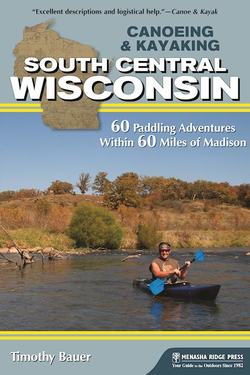Читать книгу Canoeing & Kayaking South Central Wisconsin - Timothy Bauer - Страница 26
На сайте Литреса книга снята с продажи.
Public Access and Trespassing
ОглавлениеNAVIGABLE PUBLIC WATERWAYS IN WISCONSIN ARE DEFINED, according to the Wisconsin Department of Natural Resources, as “lakes, rivers, and streams [that] have a bottom (bed) and side (bank), and enough water to float any boat, skiff, or canoe of the shallowest draft on a reoccurring basis.” In addition, “barriers such as wood or plant debris may impede actual navigation but waters are public even when multiple portages are required to get around obstructions.” And, finally, “a waterway does not need to be regularly used for recreational or other general purposes, but is a public waterway based on its capacity to be navigable and public.” For more on this, see tinyurl.com/wiwaterwayandwetlandpermits and tinyurl.com/wipublictrustdoctrine.
Paddlers are not allowed to go beyond the ordinary high-water mark on private land (this is usually the top of a riverbank) but do have reasonable access to shoreline (which will often be private land) “only if it is necessary to exit the body of water to bypass an obstruction.” It’s never unwise to have something in writing, so here’s the actual statuary language you can print out and have ready in case an ornery landowner shakes his cane at you in a “Get off my lawn, you kids!” kind of way: tinyurl.com/wisconsinriparianrights.
On the whole, it’s best for all involved if paddlers are mindful of private landowners and as unobtrusive as possible. Remember: How you conduct yourself on the river impacts other canoeists and kayakers. Like it or not, we’re all paddling ambassadors. The cooperation between landowners and paddlers will ensure river access for future generations.
